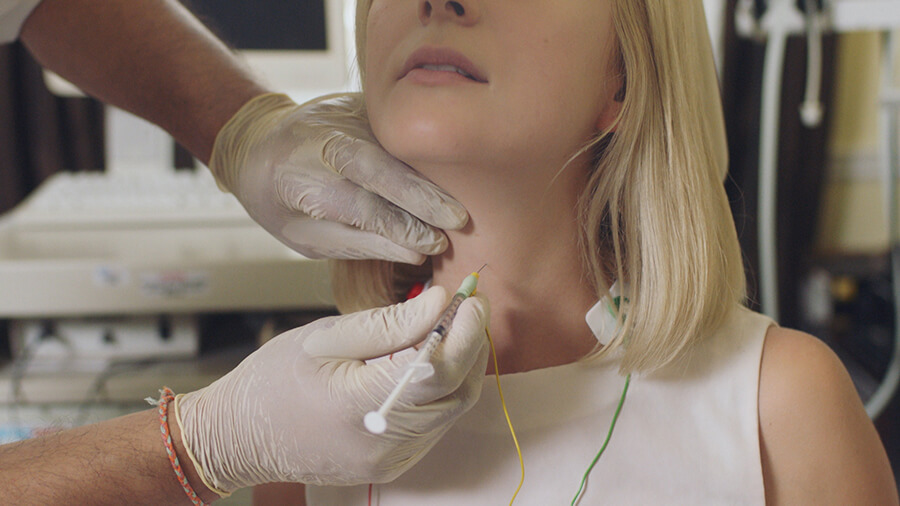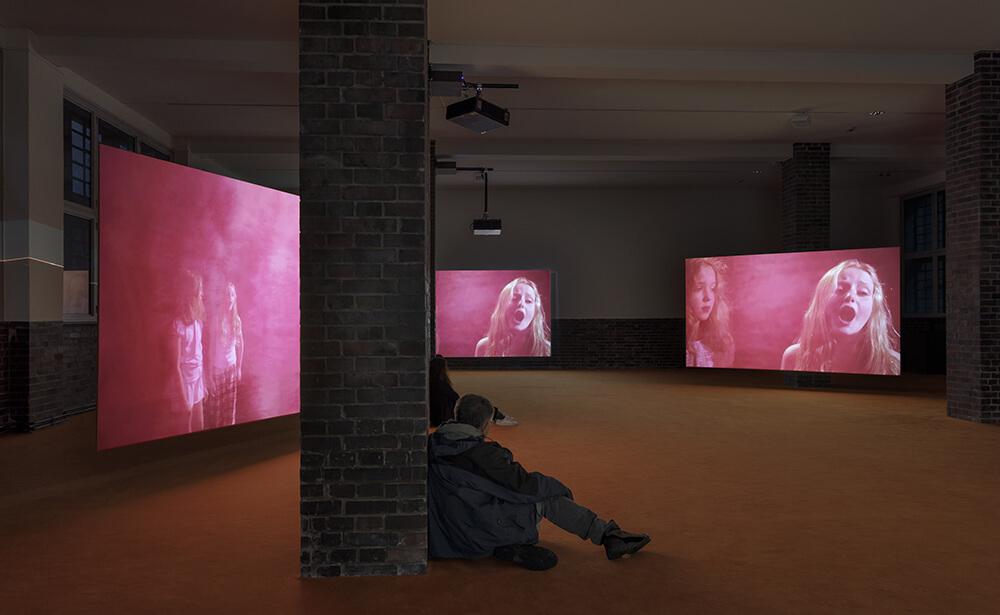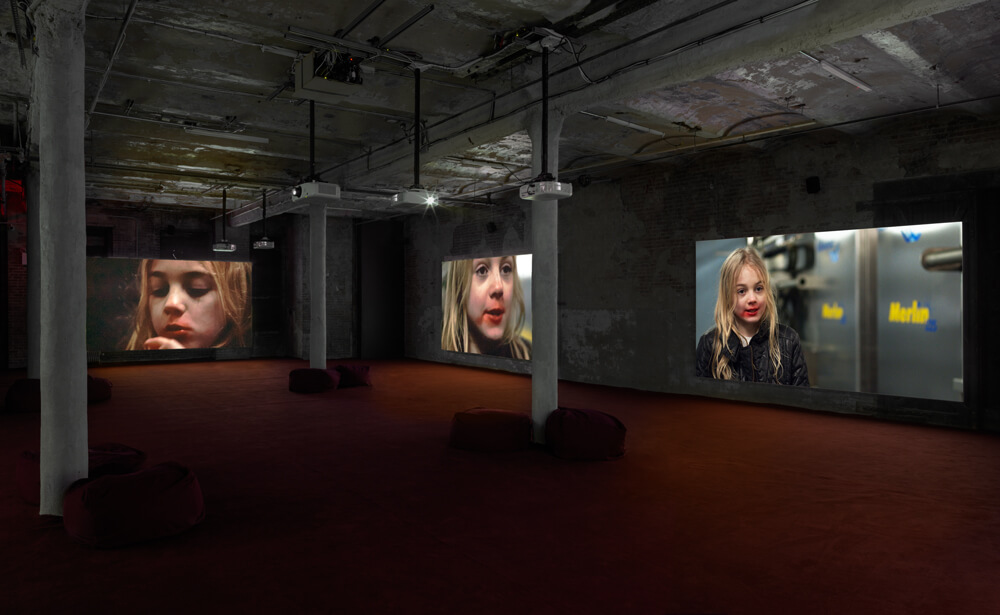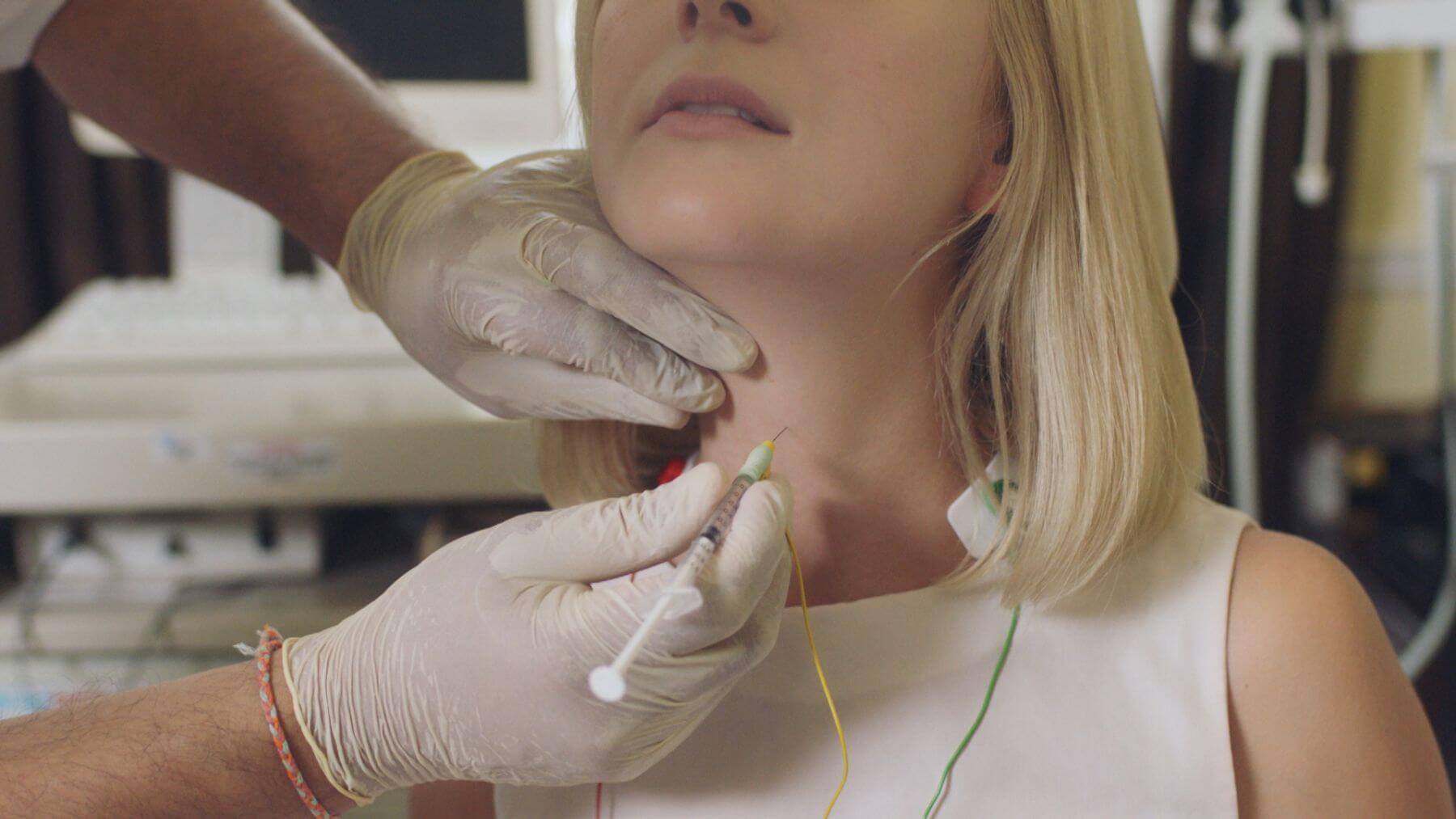Interview by Anastasia Niedinger

Causing several viewers to faint at her Serpentine Galleries screening of botox injection to the throat in The Needle and the Larynx (2016), Marianna Simnett’s work points a glorious finger at medical censorship and, ostensibly, a constructed sensitivity towards human anatomy. Traditionally employed as a shock-tactic, experimentation with the body has been relegated to a singularly-minded corner of counter-cultural avant-garde, or worse yet, lazily construed as taboo. In effect, this category threatens to simplify the complexity of her work.
Simnett’s portfolio of performative, installation and film work, among which she particularly excels as a director, has rendered five films between 2014 and 2018; The Udder (2014), Blood (2015), Blue Roses (2015), The Needle and the Larynx (2016), Worst Gift (2017). Often shown in large-scale, they impart a formidable presence in the spaces they occupy, displaying stark cinematography of invasive surgical procedures, interspersed between footage of Simnett’s anthropological fascinations. To name a few: gynaecology, mastitis of a farm cow’s udder, “sworn virgins” in rural Albania, and experimentation with neuro-controlled cockroaches — Simnett is drawn to clandestine corners of human infrastructure. Combining tender, ethnographic footage with starker film of downy body curvatures and lubricated interiors, her loosely plotted pieces feel folk-like, and its symbolism personified — achieving abstract mythology reminiscent of artists like Matthew Barney.
Recently, Simnett has moved towards more socio-medical experiments involving her own body. (The effect of The Needle and the Larynx was to deepen Simnett’s voice.) In an immediately visceral sense, the anatomical dimension of her work illuminates the peculiarity of the body’s materiality and strange occupancy of it as a vehicle. But for all its initial arousal of dissonance, Simnett’s visual dialogue with biology eventually transcends controversy — dispelling the notion of “grotesque” as anything but human, and implying there should be no hierarchy between parts of the body. (Perhaps, the aesthetics of genitalia should not alienate us any more than a limb.)
More compelling, is the vision of Simnett opening a channel with the body as if it were separate. If ‘anatomy’ was a person, then Simnett is its entrusted therapist, unravelling its traumas, injustices, perversions, and fantasies of metamorphosis. This heightened displacement is revealed in Simnett’s own imagination (and by playful doodles of human-animal entanglement on Instagram), where she experiences not merely a gender fluidity, but an existential, and effectively semantic fluidity between body and objects:
“[I] imagined the world being incorporated into the bottomless depth of my body. Dissolved of borders, I imagined not being separated by a surface, the gloriousness of a utopian body that could melt into other beings, liquid-like, collapsing ‘hes’ and ‘shes’ and ‘theys’ and ‘wes’ through evaporation and perspiration”
Many claim Simnett’s work reveals the subtly violent acts which surround us. And yet, her films impart a humble realism that violence is as natural as life itself. Even the title of Simnett’s combined omnibus Blood in My Milk (2018) insinuates a kinship between innocence and sin; ostensibly, one cannot exist without the other. Through its ripe candidness, Simnett reveals a vastly more expansive schematic of ‘honesty’, of which our social, aesthetic and even artistic landscapes occupies a very small, and mediocre corner. In this way, her work is utterly refreshing, especially for viewers who feel most alive exploring the very depths of physical, and psychological sincerity.


In your performative practice, your body is your artistic medium. How do you feel being the artist and, at the same time, the artistic medium?
‘Like the master of my suffering!’ as our friend Antonin Artaud would say. Like the lab rat and the scientist, the sparrow and the hawk! I can’t separate myself from my work and don’t know what it means to be detached. Obviously, it is very different, I can only assume, to being the clay or the paint, but by treating my body as malleable, I want to emphasise the potential for transformation.
In this sense, what has been your most challenging project so far?
Maybe it’s a mixture of adrenalin and amnesia, but I always forget the nasty bits. Faint with Light gave me a seizure; The Needle and the Larynx made me mute for a few weeks. I’m not casual with these demanding undertakings, but at the same time, they are easy to recover from.
What’s harder and more important is exposing the less visible violent structures which underpin my urge to make the work. The biggest challenge is staying with the trouble (hi, Donna Haraway), telling stories that chime with the harshness of our environment and that offer some salvation and humour.
With the term ‘body without organs, ’ Deleuze describes a relationship to one’s literal body as an abstraction of corporeality. In The Needle and the Larynx, a surgeon injects Botox in your larynx; What is your relationship to your body after the injection?
There was nothing for two days, just waiting and a strange mixture of fear and guilt. I watched the footage of my neck being punctured by that little hole and imagined the world being incorporated into the bottomless depth of my body.
Dissolved of borders, I imagined not being separated by a surface, the gloriousness of a utopian body that could melt into other beings, liquid-like, collapsing ‘hes’ and ‘shes’ and ‘theys’ and ‘wes’ through evaporation and perspiration, like this vanishing act accomplished through a brutal physical procedure.
When the injection kicked in, my new voice was deep but weak and took a few weeks before it strengthened. It was strange to alter such a signature part of my identity, but the aim was never to become masculine, though this was often the assumption. My body became a conduit to fire up conversations about the construction of gender, the refusal of conventions and the imagining of radical interventions.
What do you think about the biotechnological and biopolitical domination of our bodies in the current times?
Paul Preciado, in his book Testo Junkie, describes self-administering testosterone as ingesting a chain of political signifiers, ‘a series of signs, texts, and discourses, the process through which the hormone came to be synthesised, the technical sequences that produce it in the laboratory’. The rise in networked ontologies creates a need to think through entangled subjectivities.
The capital ‘I’ can no longer stand up. We have all thoroughly infected each other! Most of my favourite artists and thinkers are mutants, hybrids or monsters as they’ve intervened with the chain and made something go radically wrong.
In 2015 two audience members fainted during a screening of your videos at the Serpentine Gallery Pavilion (London); Were you expecting this reaction from the audience before the screening? which feedback did you get from them?
Fainting follows me around like an old faithful friend. A man dropped off last week at my show called SEIZURE at Copenhagen Contemporary. A physical response is the all-time best gift. I don’t think my work is intentionally aggressive. It’s just exposing something very raw, which I suppose hurts a bit to watch.
What is your chief enemy of creativity?
Lack of feeling.
You couldn’t live without…
Conversation and costume.






